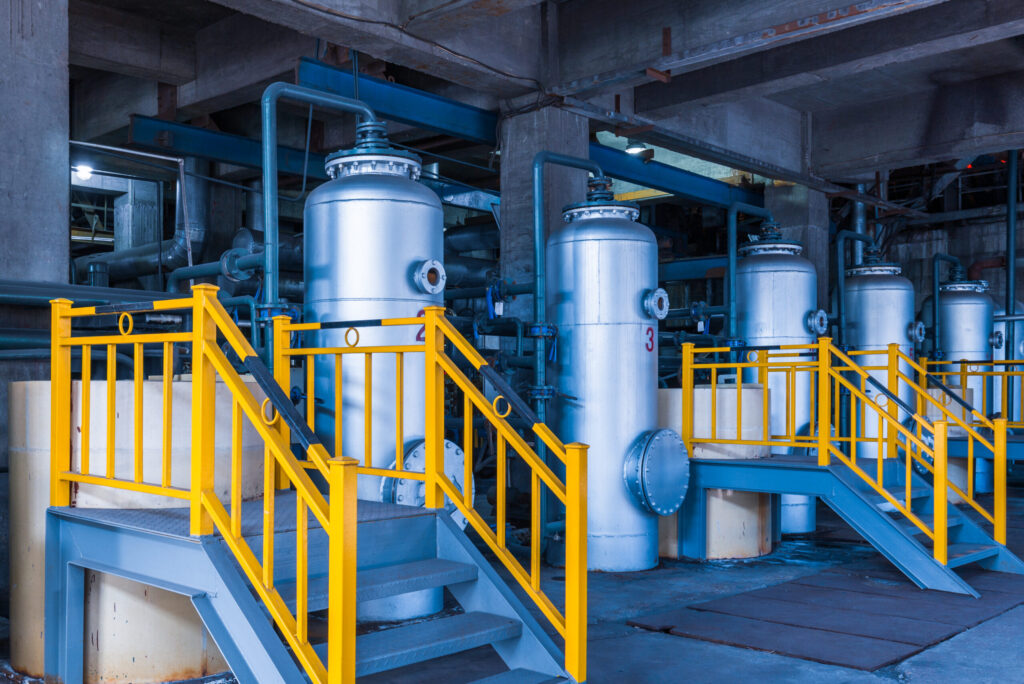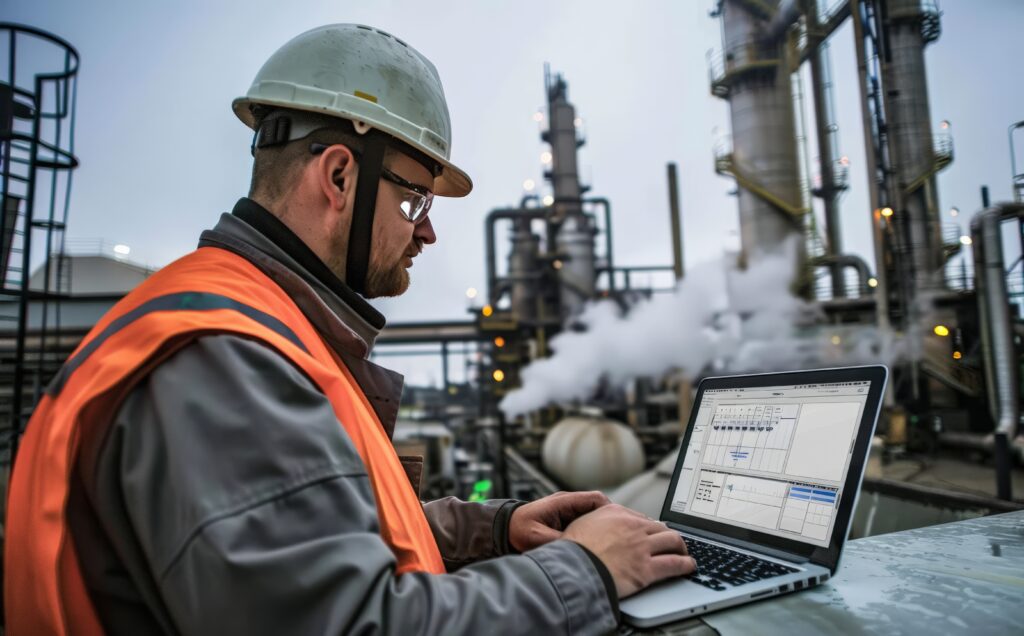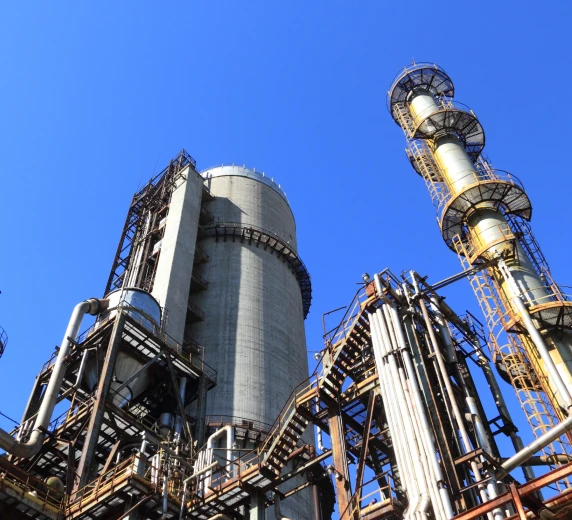Hydrocracking Production
Hydrocracking Production
Hydrocracking is a vital process in for ooland trade refinery, offering a means to enhance the value of heavy feedstocks and meet market demands for cleaner, high-quality fuels. Understanding the technical aspects and operational requirements is crucial for optimizing hydrocracking performance and achieving economic and environmental goals.
Hydrocracking is a crucial catalytic process used in ooland trade to convert heavier fractions of crude oil into valuable lighter products, such as gasoline, diesel, and jet fuel. This process helps maximize the yield of high-value products from a barrel of crude oil and is essential for improving the overall profitability and efficiency of Ooland trade refinery
Hydrogenation: The feedstock and hydrogen are introduced into a hydrocracking reactor. In this reactor, the feedstock undergoes a series of chemical reactions, including hydrogenation, to remove sulfur, nitrogen, and other impurities.
Hydrocracking is a vital process in for ooland trade refinery, offering a means to enhance the value of heavy feedstocks and meet market demands for cleaner, high-quality fuels. Understanding the technical aspects and operational requirements is crucial for optimizing hydrocracking performance and achieving economic and environmental goals.
Hydrocracking is a crucial catalytic process used in ooland trade to convert heavier fractions of crude oil into valuable lighter products, such as gasoline, diesel, and jet fuel. This process helps maximize the yield of high-value products from a barrel of crude oil and is essential for improving the overall profitability and efficiency of Ooland trade refinery
Hydrogenation: The feedstock and hydrogen are introduced into a hydrocracking reactor. In this reactor, the feedstock undergoes a series of chemical reactions, including hydrogenation, to remove sulfur, nitrogen, and other impurities.
Available
Reach Out to Us now
Hydrocracking is a vital process in for ooland trade refinery, offering a means to enhance the value of heavy feedstocks and meet market demands for cleaner, high-quality fuels. Understanding the technical aspects and operational requirements is crucial for optimizing hydrocracking performance and achieving economic and environmental goals.
Hydrocracking is a crucial catalytic process used in ooland trade to convert heavier fractions of crude oil into valuable lighter products, such as gasoline, diesel, and jet fuel. This process helps maximize the yield of high-value products from a barrel of crude oil and is essential for improving the overall profitability and efficiency of Ooland trade refinery
Hydrogenation: The feedstock and hydrogen are introduced into a hydrocracking reactor. In this reactor, the feedstock undergoes a series of chemical reactions, including hydrogenation, to remove sulfur, nitrogen, and other impurities.
Products
After the hydrocracking reaction, the product mixture is separated into different fractions using distillation or other separation techniques. These fractions are further treated to meet commercial specifications, including removing sulfur, nitrogen, and other impurities.
- Gasoline
- Diesel
- Jet Fuel
- Naphtha
Maximizes the yield of high-value products from heavier feedstocks with improved product quality Produces cleaner fuels with lower sulfur and nitrogen content, meeting stringent environmental regulations that allows ooland trade to adjust the product mix based on market demands and crude oil quality.


Available
Reach Out to Us now
Hydrocracking is a vital process in for ooland trade refinery, offering a means to enhance the value of heavy feedstocks and meet market demands for cleaner, high-quality fuels. Understanding the technical aspects and operational requirements is crucial for optimizing hydrocracking performance and achieving economic and environmental goals.
Hydrocracking is a crucial catalytic process used in ooland trade to convert heavier fractions of crude oil into valuable lighter products, such as gasoline, diesel, and jet fuel. This process helps maximize the yield of high-value products from a barrel of crude oil and is essential for improving the overall profitability and efficiency of Ooland trade refinery
Hydrogenation: The feedstock and hydrogen are introduced into a hydrocracking reactor. In this reactor, the feedstock undergoes a series of chemical reactions, including hydrogenation, to remove sulfur, nitrogen, and other impurities.
Products
After the hydrocracking reaction, the product mixture is separated into different fractions using distillation or other separation techniques. These fractions are further treated to meet commercial specifications, including removing sulfur, nitrogen, and other impurities.
- Gasoline
- Diesel
- Jet Fuel
- Naphtha
Maximizes the yield of high-value products from heavier feedstocks with improved product quality Produces cleaner fuels with lower sulfur and nitrogen content, meeting stringent environmental regulations that allows ooland trade to adjust the product mix based on market demands and crude oil quality.


Have You Any Question
Hydrocracking is a catalytic process used to convert heavier fractions of crude oil into lighter, more valuable products such as gasoline, diesel, and jet fuel. It is important because it maximizes the yield of high-value products from crude oil and improves the overall efficiency and profitability of refining operations.
The hydrocracking process involves reacting heavy feedstocks with hydrogen in the presence of a catalyst. This reaction breaks down large hydrocarbon molecules into smaller, more valuable ones. The process includes hydrogenation to remove impurities and catalytic cracking to produce lighter products.
Key components include the hydrocracking reactor, where the reaction takes place, advanced catalysts that facilitate the cracking process, a hydrogen supply system, and separation units that isolate the different product fractions. Each component plays a critical role in ensuring the efficiency and effectiveness of the process.
Hydrocracking offers several benefits including increased yields of high-value products, improved product quality by reducing sulfur and nitrogen content, and operational flexibility to adjust the product slate based on market demands. It also helps refineries meet environmental regulations and optimize profitability.
Have You Any Question
Hydrocracking is a catalytic process used to convert heavier fractions of crude oil into lighter, more valuable products such as gasoline, diesel, and jet fuel. It is important because it maximizes the yield of high-value products from crude oil and improves the overall efficiency and profitability of refining operations.
The hydrocracking process involves reacting heavy feedstocks with hydrogen in the presence of a catalyst. This reaction breaks down large hydrocarbon molecules into smaller, more valuable ones. The process includes hydrogenation to remove impurities and catalytic cracking to produce lighter products.
Key components include the hydrocracking reactor, where the reaction takes place, advanced catalysts that facilitate the cracking process, a hydrogen supply system, and separation units that isolate the different product fractions. Each component plays a critical role in ensuring the efficiency and effectiveness of the process.
Hydrocracking offers several benefits including increased yields of high-value products, improved product quality by reducing sulfur and nitrogen content, and operational flexibility to adjust the product slate based on market demands. It also helps refineries meet environmental regulations and optimize profitability.




